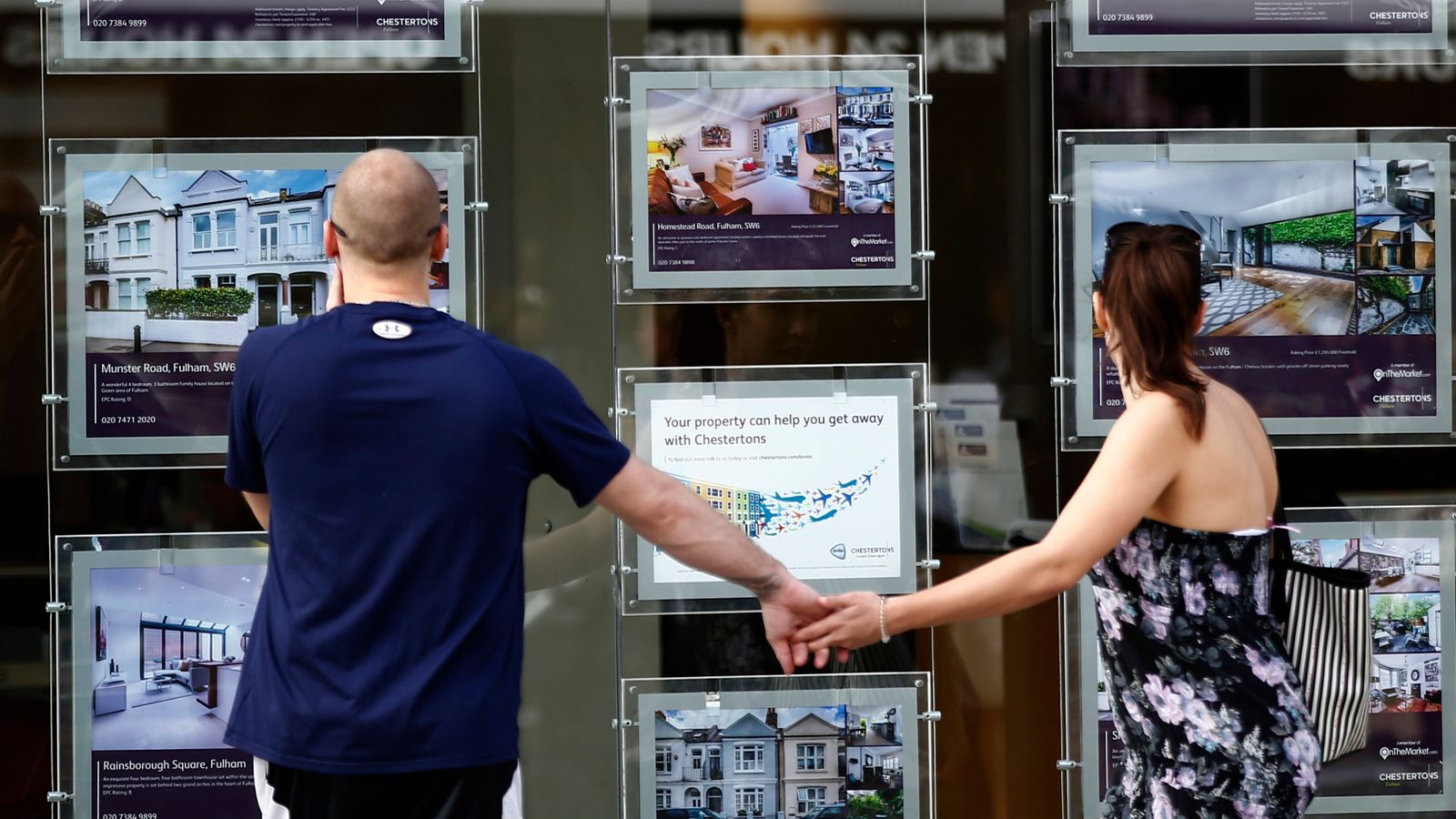‘Storm clouds gathering’ for property market amid biggest annual fall in house prices for nearly 14 years

House prices fell by 3.4% year-on-year in May – the biggest annual fall in nearly 14 years, according to one of the UK’s biggest mortgage lenders.
The drop is the biggest since July 2009, when an annual fall of 6.2% was recorded, Nationwide said.
Data from the building society also showed a month-on-month decline of 0.1% in May, with the average cost of a UK home now said to be £260,736.
Nationwide had said there were tentative signs of a recovery in the market in a report last month.
Its index for April reported a 0.4% rise in monthly prices, while the annual rate saw an improvement from -3.1% in March to -2.7%.
Robert Gardner, Nationwide’s chief economist, said the latest data “largely reflects base effects with prices broadly flat over the month after taking account of seasonal effects”.
But he added: “Average prices remain 4% below their August 2022 peak.
“Recent Bank of England data had shown some signs of recovery in housing market activity, although the number of mortgages approved for house purchase in March was still around 20% below pre-pandemic levels.
“Moreover, headwinds to the housing market look set to strengthen in the near term.
Advertisement
“While consumer price inflation did slow in April, it was a much smaller decline than most analysts had expected.”
Read more from business:
Amazon to pay millions to settle doorbell privacy claims
Members of scandal-hit CBI begin confidence vote
Chancellor comfortable with recession if it brings down inflation
Mr Gardner said expectations the Bank of England will raise interest rates again, along with projections that they will remain higher for longer, would likely renew upward pressure on mortgage rates.
But he thinks there are reasons to be hopeful about the affordability of homes in the long run.
He added: “Nevertheless, in our view a relatively soft landing remains the most likely outcome since labour market conditions remain solid and household balance sheets appear in relatively good shape.
“While activity is likely to remain subdued in the near term, healthy rates of nominal income growth, together with modestly lower house prices, should help to improve housing affordability over time.”
Property market facing problems as ‘storms clouds gather’
Alice Haine, personal finance analyst at investment platform Bestinvest, was more pessimistic.
She said: “While the start of the year saw an uptick in market activity amid falling mortgage rates and a robust labour market, storm clouds are gathering once again as interest rates and gilt yields edge ever higher.”
She added: “With the markets now betting on more rate hikes ahead, with interest rates potentially peaking at 5.5% – or worse, higher – as the Bank of England looks to win the battle to tame inflation, this causes problems for the property market.
“The changing interest rate expectations have led to big movements in the bond markets, and as bond yields rise so do swap rates, which lenders use to price home loans.
“It means borrowers must adjust to even higher mortgage rates in addition to persistently high living costs and rising taxes.
“Over the past week, hundreds of residential and buy-to-let mortgages have been pulled from the market as lenders reassess their offers.”
Gabriella Dickens, senior UK economist at Pantheon Macroeconomics, said Nationwide’s data for May suggested buyers “are struggling with affordability”.
She added: “Other timely measures also are pretty downbeat. While our seasonally adjusted version of Rightmove’s measure rose by 1.4% in May, it shows asking prices, not the final price the seller accepts.
“Sellers probably are raising their initial asking price in order to achieve a final price they are comfortable with… Looking ahead, we think the downward trend in house prices has a little further to run.”